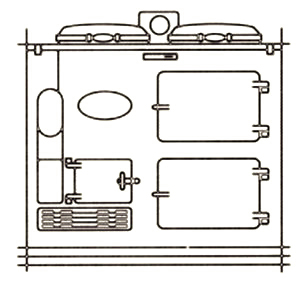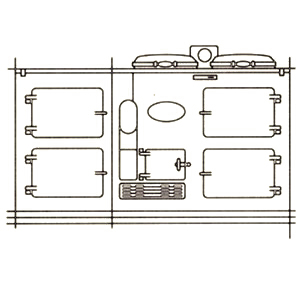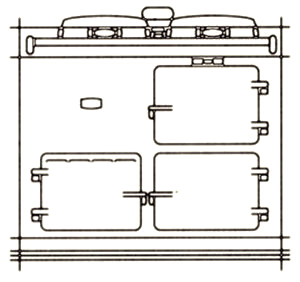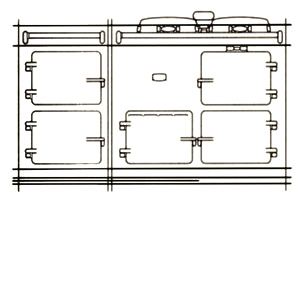AGA Information
The AGA cooker is a stored-heat stove and cooker, working on the principle that the heat capacity of a heavy cast iron frame can absorb heat from a relatively low-intensity but continuously-burning source, and the accumulated stored heat can then be used when needed for cooking. Originally heated by slow-burning coal, the Aga cooker was invented in 1929 by the Nobel Prize-winning Swedish physicist Gustaf Dalén (1869–1937), who was employed first as the chief engineer of the Swedish AGA company (Swedish: Aktiebolaget Svenska Gasaccumolator, English:Joint stock company Swedish Gas Accumulator). The cookers are today manufactured by the Aga Range Master Group.
In 1912 Gustaf Dalen lost his sight in an explosion while developing his earlier invention, a porous substrate for storing gases, Agamassan. Forced to stay at home, Dalen discovered that his wife was exhausted by cooking. Although blind, he set out to develop a new stove that was capable of a range of culinary techniques and easy to use.
Adopting the principle of heat storage, he combined a heat source, two large hotplates and two ovens into one unit: the AGA Cooker. The cooker was introduced to England in 1929, and its popularity in certain parts of English society (owners of medium to large country houses) led to the coining of the term "AGA Saga" in the 1990s, referring to a genre of fiction set amongst stereotyical upper-middle class society.
Aga cookers can also make a contribution to space heating, although it is not true that they can heat an entire house, despite persistent claims to the contrary, presumably arising because the cookers look similar to the many types of central-heating range such as the 'Stanley' or the 'Rayburn' Range, also made by the AGA Rangemaster Group.




